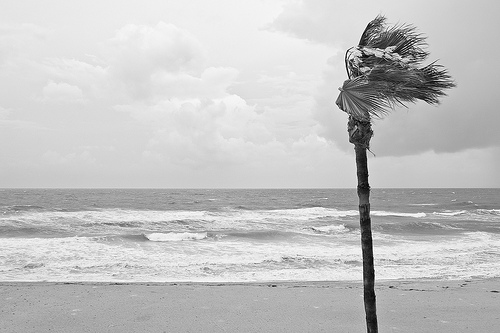You train hard to do your very best on race day; but the weather on race day is the one thing you cannot control. Whether it’s rain, wind or heat, you must be able to adjust your expectations and strategies on the fly in order to finish your race successfully.
If you haven’t already, it’s only a matter of time before you experience a bad-weather triathlon. Windy conditions are probably the most common weather situation a triathlete has to deal with. At times, participants may be given the option of doing a duathlon if the swim course is deemed to have an unusually high degree of difficulty because of weather conditions.
Here are some tips on how to deal with high winds and other bad weather conditions when racing:
Know Your Swimming Abilities
If the weather conditions have made the swim portion of the triathlon difficult, because the water is rough, you have to decide for yourself if it’s safe. You have to know if you’re capable of swimming in high wind and white cap water conditions or not. No one can make that decision for you.
It is rare, but bad weather conditions have unfortunately brought fatalities to triathlons, so don’t try to be a hero if you’re not comfortable and not an experienced swimmer under those conditions.
How to Prepare For Rough Swim Conditions
You can train for rough swimming conditions by heading to the lake and doing an open water swim on days when the winds are 15-20 mph. But don’t do this training alone. Either swim with a group of swimmers, a buddy or have someone follow you in a canoe, boat or kayak just in case.
How to Swim Through Waves
The best thing to do is to ride atop the waves; otherwise you’ll just get dragged down by them. Take side breaths like you typically do with your freestyle strokes. Essentially, you’ll be riding the waves. It may not feel like you’re moving forward, but you are. Just be sure to keep an eye on your buoys in order to stay on course.
Biking On Windy Days with Aero Wheels
A very windy day will totally impact the biking portion of a triathlon. Aero wheels may do more harm than good — especially if you weigh less than 180 pounds. A lighter weight triathlete riding a bike with aero wheels with high winds may have a hard time keeping their bike on the road as a result of the cross winds.
Before you travel to the triathlon city, make sure you know the weather conditions of the city. You can also just plan to travel to a triathlon event with 2 sets of wheels, in case you have to make a last-minute adjustment due to weather.
When the Temperature Heats Up
Staying hydrated is important, but it is completely individualized. For some athletes, ingesting enough fluid to offset loss is impossible. Electrolytes are the gate keepers for fluid movement within the body, and without adequate intake the gates lock up. Chloride, Potassium, Sodium, and Magnesium are the most crucial electrolytes to replace with the greatest emphasis on Sodium/Chloride.
Review the course, especially the run. Is it shady, sunny, open asphalt or windy? Choose your clothing carefully. Micro-fiber clothing creates a greater evaporative surface by “spreading out” sweat. Lightweight, breathable fabrics are most desirable for dissipating heat; light colors reflect heat and dark colors absorb it.
Heat may be the toughest competitor you face on race day, but with a bit of planning you can greatly lessen the effects. If your event happens to be on one of those 90+ degree days, make sure you adjust your pace accordingly.
When your Gear (and Body) Gets Rained On
I’m sure you have trained in the rain, but when you’re racing in the rain it’s a little different because now you’re in race mode. A wet day means that all your gear may be wet and it will be harder to use and operate, so make quality chooses about what you wear so you’re not wrestling with your clothes. You can bring plastic bags with you to set up in transition to keep your things dry, but it isn’t always guaranteed that they will work.
You may want to layer because rain will make it chilly. You may also want clear lenses on the bike to help you see more clearly. On the run portion, a visor or hat to keep the rain out of your face might prove to be helpful.
When it is raining, unless the air temperature is 80 degrees, you’ll want a dry set of clothes at the finish line to put on because you’ll be cold. Be sure to also drink plenty of warm liquids to warm up your body and refuel your muscles.
Keep these tips in mind and use them if you get stuck racing in less than ideal weather conditions. With a little bit of preparation, you‘ll be able to get through your next triathlon no matter what the weather. If you would like help training for your next triathlon, contact me today! I’ll help you get on your way!







